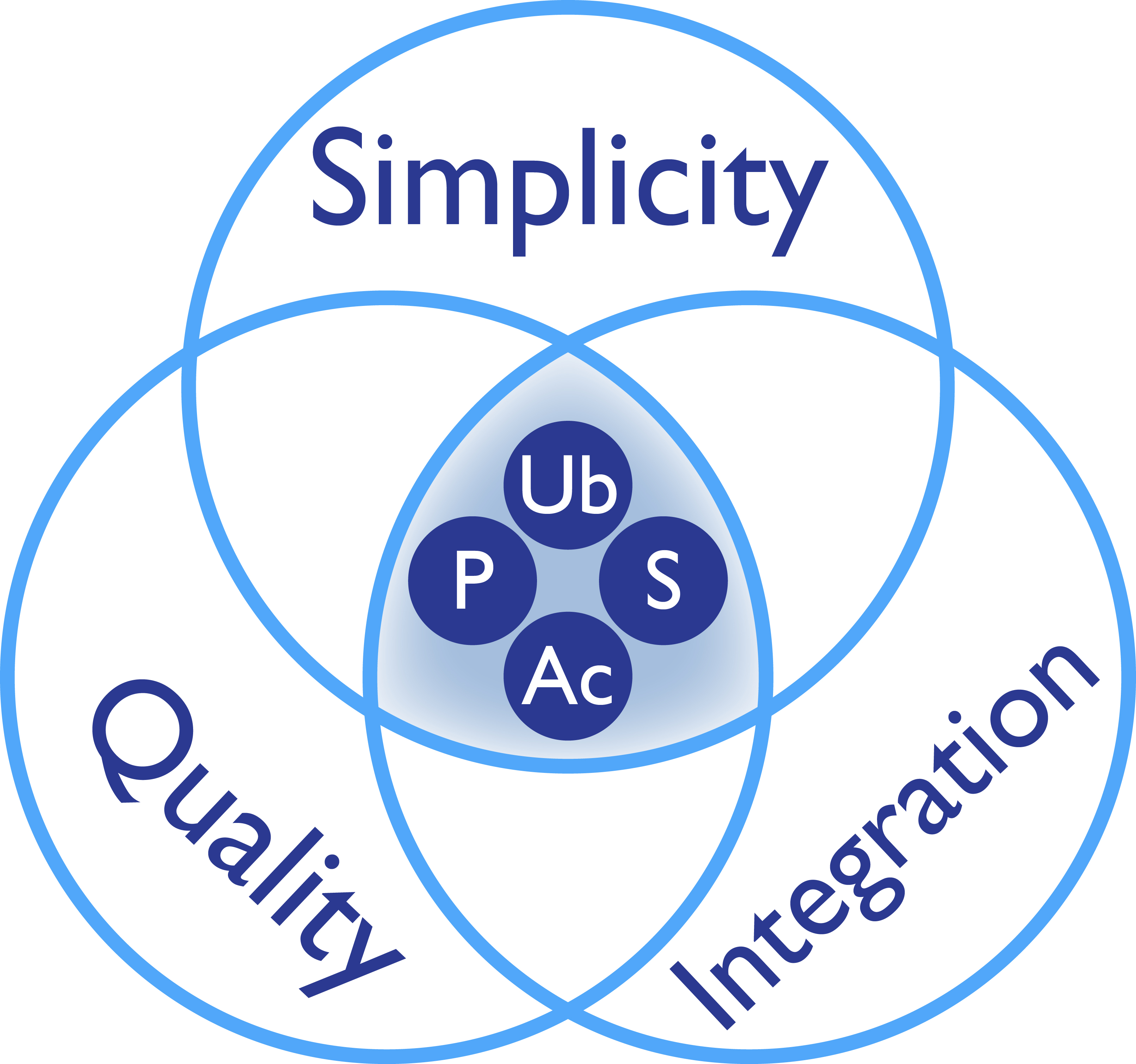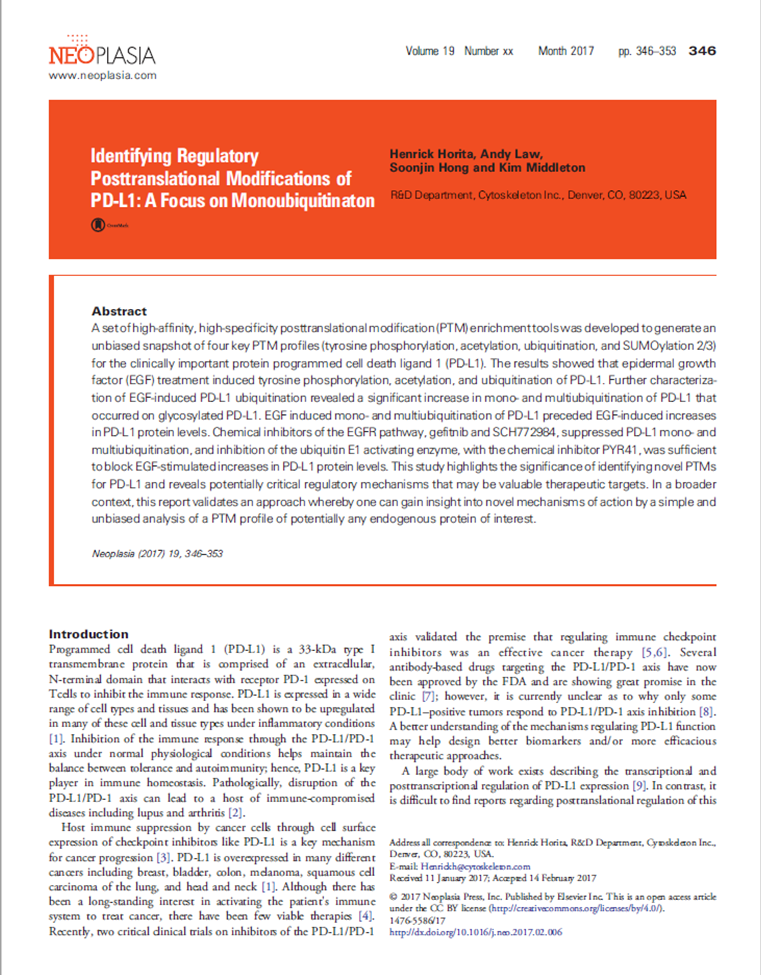
Signal-Seeker™: Identifying Regulatory Posttranslational Modifications of PD-L1
Abstract
A set of high-affinity, high-specificity posttranslational modification (PTM) enrichment tools was developed to generate an unbiased snapshot of four key PTM profiles (tyrosine phosphorylation, acetylation, ubiquitination, and SUMOylation 2/3) for the clinically important protein programmed cell death ligand 1 (PD-L1). The results showed that epidermal growth factor (EGF) treatment induced tyrosine phosphorylation, acetylation, and ubiquitination of PD-L1. Further characterization of EGF-induced PD-L1 ubiquitination revealed a significant increase in mono- and multiubiquitination of PD-L1 that occurred on glycosylated PD-L1. EGF induced mono- and multiubiquitination of PD-L1 preceded EGF-induced increases in PD-L1 protein levels. Chemical inhibitors of the EGFR pathway, gefitnib and SCH772984, suppressed PD-L1 mono- and multiubiquitination, and inhibition of the ubiquitin E1 activating enzyme, with the chemical inhibitor PYR41, was sufficient to block EGF-stimulated increases in PD-L1 protein levels. This study highlights the significance of identifying novel PTMs for PD-L1 and reveals potentially critical regulatory mechanisms that may be valuable therapeutic targets. In a broader context, this report validates an approach whereby one can gain insight into novel mechanisms of action by a simple and unbiased analysis of a PTM profile of potentially any endogenous protein of interest.
For more specific information about Signal-Seeker™ protein modification detection tools please view our product pages, resource links, or contact technical support.




